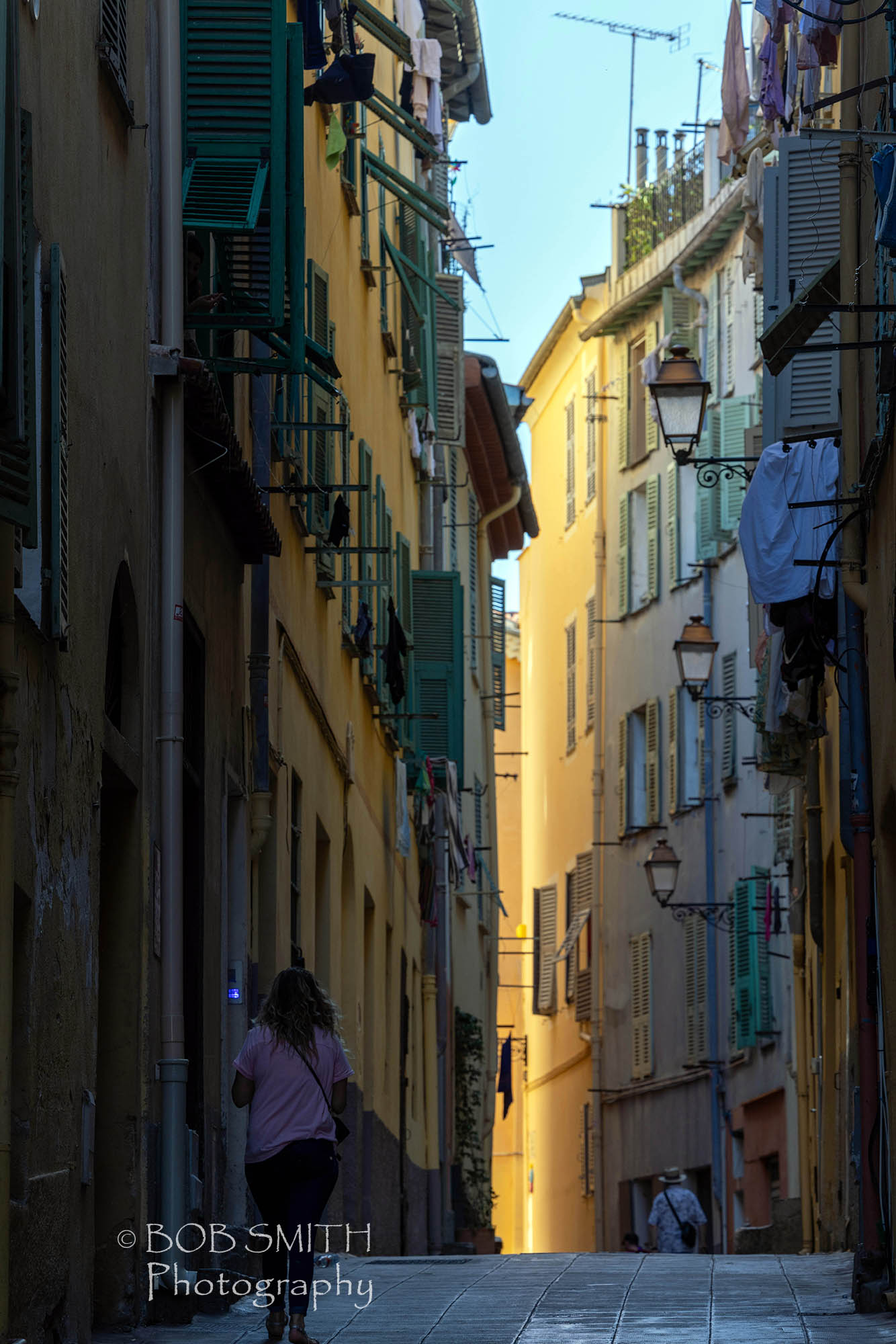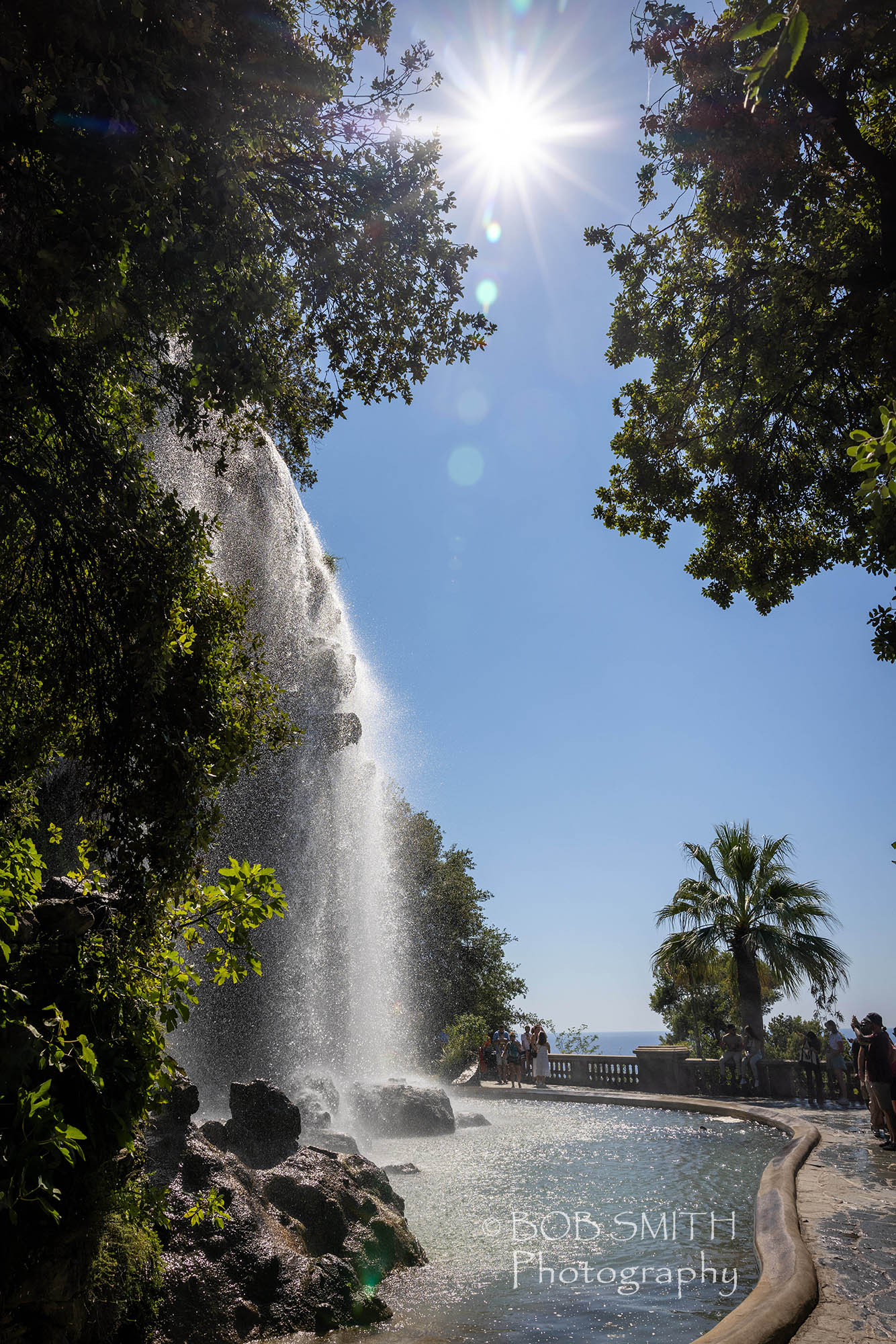I first visited Nice, fleetingly, 49 years ago, on a round-Europe trip in an old van with two mates, then two years later while Interrailing as a student.

The Theatre National de Nice. The banner reads, in English: ‘If Juliette isn’t on the balcony, it’s because she’s on the stage’.
We were due to holiday in France’s fifth most populous city in 2020 but the pandemic put paid to those plans. So I figured we owed Nice a visit.

A street in Vieille Nice
The city shows its strong Italian influence in its architecture and its own dialect, Niçard, with street names in both French and the dialect in Vieille Nice.
 It has long been a popular destination for Britons, its long seafront the Promenade des Anglais, reflecting the influx of wealthy English families who wintered in the city, blessed with a mild climate, during the 19th century.
It has long been a popular destination for Britons, its long seafront the Promenade des Anglais, reflecting the influx of wealthy English families who wintered in the city, blessed with a mild climate, during the 19th century.

The waterfall on the Colline du Chateau, a favourite with tourists
Today, the city attracts visitors from all over the world and American accents were as much in evidence as British ones. There were plenty of holidaymakers from other European nations too.

The Sky Mirror sculpture by Anish Kapoor stands in front of the Casino in Monte Carlo, Monaco, where only foreigners are allowed to bet
There’s an undeniable feel of affluence about the place, nowhere more obvious than in Monaco, eight miles to the East, where huge yachts crowd the harbour in an ostentatious display or wealth and where the state-owned casino underpins an economy where personal income and capital gains are not taxed, unless you’re a French citizen.
Monte Carlo Casino is out of bounds to Monégasque gamblers, that privilege being afforded only to étrangers.

Len Blavatnik’s huge yacht
But even in Nice itself, there’s no shortage of the signs of what many would class obscene personal affluence. Moored in Port Lympia was the gigantic yacht Odessa II, owned by Ukrainian-born magnate Len Blavatnik, reckoned to have amassed a fortune of more than $35bn after the collapse of the Soviet Union. The yacht is valued at $80m and dwarfs most of the other millionaires’ crafts.

This angular Kong gorilla next to the I love Nice sign is one of 10 pop-art works by Richard Orlinski dotted around city
One nice aspect of Nice was the public display of art, from the large pop-art animals of Richard Orlinski, including an angular sculpture of gorilla Kong next to the I Love Nice letters, to the aluminium Fiat 500 by Stephane Cipre. A Dimanche à Nice recalls the artist’s childhood trips.

Dimanche à Nice
There was also an outdoors photographic exhibition of celebrities and local events in the Place Garibaldi and the buildings themselves around the square feature trompe l’oeil facades, the windows of which have painted surrounds.

A sign outside a butcher’s in the old town
The narrow streets of Vieille Nice are very photogenic, even in their sometimes dilapidated state and residents rub shoulders with cosmopolitan visitors as they join queues to shop for family staples, while holidaymakers peruse the gift stores and cafes.

Mannequins receive a spruce-up on the streets of Vieille Nice
And for the duration of the stay, the sky matched the azure of the Baie des Anges, with not a single cloud obscuring the fierce Mediterranean sun.








